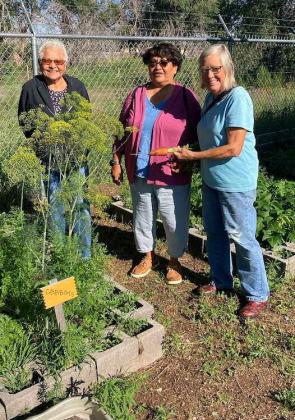If you are a gardener, you probably have heard of crop rotation and maybe tried to move vegetables to different locations in the garden. There is a science to selecting this arrangement and following it will give you a more successful garden.
Rotation of plant families helps reduce pest and disease pressure and minimizes the depletion of soil nutrients. Tomatoes are prone to a set of diseases that persist in the soil and it takes three to five years for the organism to die. They also take up specific nutrients in the soil so switching to a different set of plants helps replenish the soil. You also need to know the other members of the tomato family, Solanaceae: peppers, chilies, potatoes, and eggplant. These are all common vegetables grown in a backyard garden. The vegetables in one family are all lumped together so that the rotation is by family, not by individual vegetables. Otherwise, the diseases will persist. This is true for use of soil nutrients, the kind of bugs that prefer to eat them and similar diseases of viruses and fungus problems.
If you have enough space, a part of crop rotation can be to let a section sit fallow (not planted) or plant a cover crop of legumes or grasses. For most small gardeners, rotating vegetables of different families, is more practical. Even a small garden with just a few raised beds can benefit from crop rotation. You can divide your raised bed into two or four sections and rotate this space just as you would a larger garden. Keep a record of where you placed your vegetables. You will need to refer back to it when placing your crops for the next three to five years. An example of a three-year rotation is: Year 1 – Tomatoes; Year 2 – Zucchini; Year 3 – Beans.
Below is an alphabetical list of the most common garden vegetable families to help you:
Amaryllidacea: onions, leeks, & garlic.
Asteracea: lettuce, endive, & chard.
Brassicaceae: cabbage, broccoli, cauliflower, kale, & oriental greens.
Chenopodiaceae: spinach, beets, & chard.
Cuburbitaceae: squash, zucchini, cucumbers, pumpkins, & melons.
Fabaceae: peas and beans. Poaceae: corn and all the grains.
Solanaceae: tomatoes, peppers, chilies, potatoes, & eggplants.
If you have a variety of tomatoes you love to grow but are concerned about significant diseases, put them in a separate pot and at the end of the season, discard the soil away from your garden. Clean and bleach the pot before reusing. This gives you extra space for rotation. Another option is to coordinate with a friend, neighbor, or family member who loves gardening. By coordinating with others, you can try different things you wouldn’t have grown because of space. The crop you pick can then be shared with your buddy.
Beyond rotation, there are other practices that help you have a healthy garden. Disease prevention tips along with rotation help prevent problems in the garden. Clean and sterilize equipment such as hoops, stakes, shovels, and hand tools. Use soap and water and either bleach or alcohol. When choosing seeds, look for varieties that have resistance to plant diseases you have seen in your garden.
Edith Iwan is a Master Gardener who lives and works in Thoreau. As a Master Gardener she assists the County Cooperative Extension Service in providing accurate, researchbased gardening information to county residents. If you have any gardening questions, please call the NMSU Cibola County Extension at 505-287-9266 or NMSU McKinley County Extension at 505-863-3432

